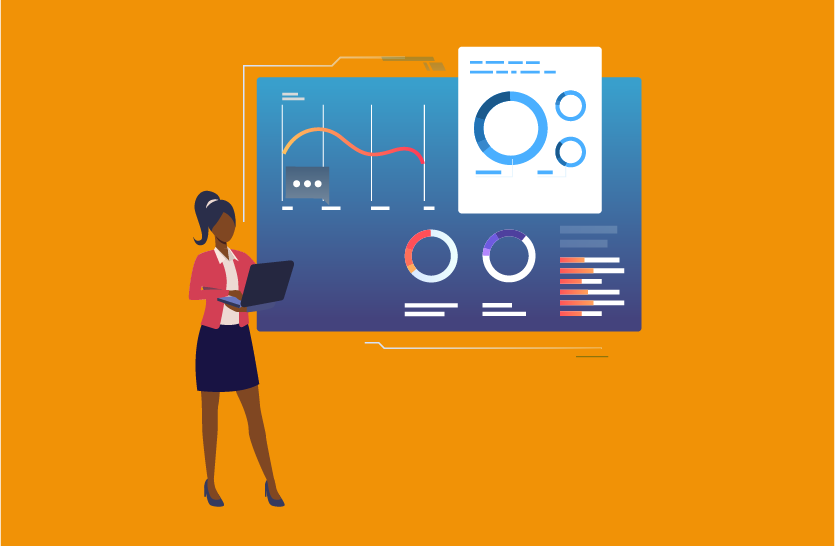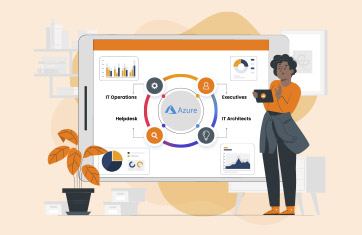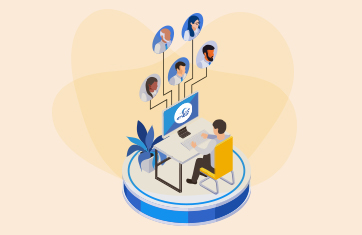As the Managed Service Provider (MSP) landscape continues to evolve, developing a robust MSP monitoring strategy is essential for MSPs wanting to stay ahead in an increasingly complex digital environment. Rapid advancements in technology, coupled with the growing complexity of IT environments, necessitates a shift in how MSPs approach monitoring. The fiercely competitive MSP market and external pressures on costs such as cloud pricing mean that customer expectations are high but profit margins slim. Indeed, recent research from Service Leadership found that 28% of MSPs aren’t profitable. With an array of new tools and techniques available, MSPs must construct a comprehensive strategy that not only meets current needs but is also scalable, adaptable, and capable of addressing future challenges and changing market pressures.
The Importance of a Forward-Looking MSP Monitoring Strategy
An effective MSP monitoring strategy is essential for maintaining the integrity and performance of client infrastructures. Monitoring has evolved beyond merely tracking network uptime or server availability. The next decade will bring new complexities, including the proliferation of modern applications, the rise of AI and machine learning, and the increased adoption of cloud and hybrid environments. To successfully navigate these changes, MSPs must develop an AIOps (Artificial Intelligence for IT Operations) driven monitoring strategy that leverages modern technology, automation, and intelligent analytics.
Today I’ll cover 8 key factors you can include in a modern MSP monitoring strategy to help stay ahead, namely:
- Auto-Deployment
- Universal Monitor
- Auto-Discovery
- Capabilities to Monitor Modern Apps
- Deep App Insights
- Synthetic Monitoring
- Auto-Remediation
- Pay-Per-Use Licensing
Auto-Deployment: The Foundation of Agility in an MSP Monitoring Strategy
Auto-deployment is a foundational element of a modern MSP observability and monitoring strategy. As client environments expand in size and complexity, the ability to automatically deploy monitoring agents across various devices and systems becomes crucial. Auto-deployment streamlines the onboarding process, reduces human error, and ensures consistent monitoring across all client assets. This capability not only enhances operational efficiency but also enables MSPs to scale their services effortlessly as client needs evolve.
Auto-deployment technologies also ensure that monitoring systems remain up-to-date with the latest patches and configurations, minimizing risk factors such as security vulnerabilities.
Universal operator and agent technologies are now ubiquitous allowing MSPs to leverage IaC (Infrastructure-as-Code) workflows and deployment tooling to roll out day-zero monitoring that scales as the systems do. We often see eG Enterprise deployed in this way in conjunction with technologies including Red Hat OpenShift, Kubernetes (Operators), Containers, Nerdio, Citrix PVS/MVS, Terraform, ARM templates, AWS CloudFormation, Puppet, Pulumi, BICEP, Rancher and so on.
Useful articles are available on auto-deployment and monitoring:
- How to Monitor IT Infrastructure when adopting IaC for VDI and Digital Workspaces | eG Innovations
- Top DevOps Tools Review | eG Innovations
- Azure automation tools | eG Innovations
- Infrastructure-as-Code series: Practical monitoring in an IaC universe – CW Developer Network (computerweekly.com)
Universal Monitor: Achieving Comprehensive Visibility
A universal monitor is a key component of an effective MSP monitoring strategy. In an increasingly complex IT landscape, MSPs need a unified view of their clients’ environments. A universal monitor provides this by integrating data from various sources into a single pane of glass, offering a holistic view that is essential for identifying patterns, spotting anomalies, and making informed decisions quickly. This level of visibility is crucial for maintaining service levels and addressing issues before they impact end users, making the universal monitor a cornerstone of any successful MSP monitoring strategy.
For MSPs offering multi-tenant services, a high level of support and feature maturity for multi-tenancy within the monitoring tool is vital. Read more about eG Enterprise’s support for secure multi-tenancy: What is multi-tenancy? Multi-tenancy for MSPs Explained.
eG Enterprise natively supports 500+ infrastructure components, Cloud providers and applications. Which means that it provides out-of-the-box deep insights, thresholds, dashboards and reports for any of these 500+ components.
Auto-Discovery: Ensuring Comprehensive Coverage
Auto-discovery is another critical feature in a modern MSP monitoring strategy. As client environments become more dynamic, with assets being frequently added or removed (often via auto-scale), auto-discovery tools automatically detect new devices, applications, and services as they are commissioned. This ensures that nothing slips through the cracks and that the entire application and infrastructure landscape is consistently monitored. Auto-discovery not only saves time but also ensures comprehensive coverage, allowing MSPs to monitor all aspects of their clients’ infrastructure without manual intervention.
Learn more about various auto-discovery methods and how you can evaluate the success of auto-discovery methodologies, see: Autodiscovery – IT Glossary | eG Innovations.

Monitoring Modern Apps: Adapting Your MSP Monitoring Strategy
The shift towards cloud-native and microservices architectures introduces new challenges that a modern MSP monitoring strategy must address. Monitoring modern applications requires tools and techniques that go beyond traditional methods. These applications are often distributed, highly dynamic, and built using a mix of on-premises, cloud, and third-party services. To effectively monitor such environments, MSPs need capabilities that can manage the complexity and scale of modern apps. This includes real-time monitoring of containers, microservices, and serverless functions, and the ability to track the performance and health of APIs and other integration points. Adapting your MSP monitoring strategy to include these capabilities is now essential for keeping pace with customers’ expectations.
Deep Application Insights: Moving Beyond Surface-Level Metrics
To keep up with the complexity of modern applications, your MSP monitoring strategy may need to provide you with deep application insights. Surface-level monitoring is no longer sufficient; MSPs need a granular view of each component’s performance. Deep application insights involve monitoring at the code level, insights into database performance, tracking user interactions and distributed transaction tracing, and analyzing performance metrics across various layers of the stack. These insights enable MSPs to identify bottlenecks, optimize performance, and deliver a superior user experience. They are also invaluable for troubleshooting complex issues that may not be detected through traditional monitoring methods, making deep application insights a critical aspect of a modern MSP monitoring strategy.

Unlike most Application Performance Monitoring (APM) tools, eG Enterprise is designed for the MSP administrator and helpdesk. It is also licensed accordingly!
Synthetic Monitoring: Proactive Problem Identification in Your MSP Monitoring Strategy
Synthetic monitoring is another vital element of an effective MSP monitoring strategy. By simulating user interactions and transactions, synthetic monitoring allows MSPs to proactively identify potential issues before they affect real users. This proactive approach is particularly useful for ensuring the availability and performance of critical applications, especially those that are customer-facing. Synthetic monitoring can simulate various scenarios, such as different geographies, devices, and network conditions, providing a comprehensive understanding of how an application will perform under different circumstances. Incorporating synthetic monitoring into your MSP monitoring strategy helps maintain high service levels and prevent downtime.
Auto-Remediation: Reducing Mean Time to Resolution (MTTR) with Your MSP Monitoring Strategy
Automation is set to play an even greater role in MSP monitoring strategies in the coming decade, particularly around auto-remediation. Auto-remediation tools automatically resolve common issues without human intervention, reducing the time to resolution and freeing up valuable resources. For example, if a server goes down, a platform such as eG Enterprise with auto-remediation capabilities can automatically restart it or shift workloads to a backup server. This not only minimizes downtime but also reduces the workload on support and helpdesk teams. Auto-remediation is increasingly used to enable MSPs to deliver more reliable services.
Learn more:
- Fixing Citrix Issues with eG Enterprise’s Automation | eG Innovations
- Monitoring Automation & Scripting for Monitoring Systems (eginnovations.com)
Of course, with automation you need to ensure that automated actions, as well as human-instigated ones, are fully traceable and that a human operator can always understand any actions performed by the monitoring tool, such auditing is also essential for an MSP security strategy, see: Auditing Capabilities in IT Monitoring Tools | eG Innovations for details.
Pay-Per-Use Licensing: Flexibility in Your MSP Monitoring Strategy
Finally, as MSPs look to the future, the financial model of their MSP monitoring strategy will be just as important as the technical aspects. Pay-per-use licensing offers a flexible and scalable approach, allowing MSPs to align costs with the value delivered to clients. This model ensures that MSPs are only paying for what they use, making it easier to manage costs and scale services as needed. Pay-per-use licensing is particularly beneficial for MSPs that serve clients with fluctuating needs, as it allows them to adjust their monitoring resources in real-time without the burden of fixed costs.
The synthetic testing tools with eG Enterprise are licensed per installation machine. Once installed you can run unlimited tests on your applications infrastructure without racking up per test PAYG type costs. With eG Enterprise there is no per app or per app server licensing for APM. For Java apps, eG Enterprise licensing is priced per operating system, on which the JVMs are running. If your operating system has three JVMs running on it, then you are charged for the single operating system. With many other APM tools, full-stack licensing is based on each target host’s memory size. eG Enterprise is typically 10-20% of the cost of these solutions.
Learn more: eG Enterprise IT Monitoring Licensing – Cost-Effective & Flexible (eginnovations.com)
Conclusion: Building a Future-Proof MSP Monitoring Strategy
Determining an MSP monitoring strategy for the next decade requires a forward-thinking approach that embraces automation, deep insights, and flexibility. By incorporating key factors such as auto-deployment, universal monitoring, auto-discovery, and synthetic monitoring, MSPs can build an observability strategy that not only meets the needs of today but is also ready to tackle the challenges of tomorrow. As the digital landscape continues to evolve, MSPs that invest in modern monitoring capabilities will be better positioned to deliver exceptional service, maintain high levels of client satisfaction, and grow their businesses in a competitive market.
eG Enterprise is an Observability solution for Modern IT. Monitor digital workspaces,
web applications, SaaS services, cloud and containers from a single pane of glass.
Learn More:
- Read about the limitations of old-school RMM tools and how to overcome them.
- AVD Monitoring for MSPs (Managed Service Providers) | eG Innovations
- Learn how MSPs can integrate montioring alerts with multiple ITSM tools at the same time (eginnovations.com)
- How eG Enterprise helps MSPs offering digital workspaces, add value-added services | eG Innovations
- How MSPs can Capitalize on the Rush to Localize IT Services (eginnovations.com)
- Read a case study on eG Enterprise white-labelled by a partner: Spadafy leverages eG Enterprise to deliver secure VDI and professional services to healthcare providers – Case Study | eG Innovations











